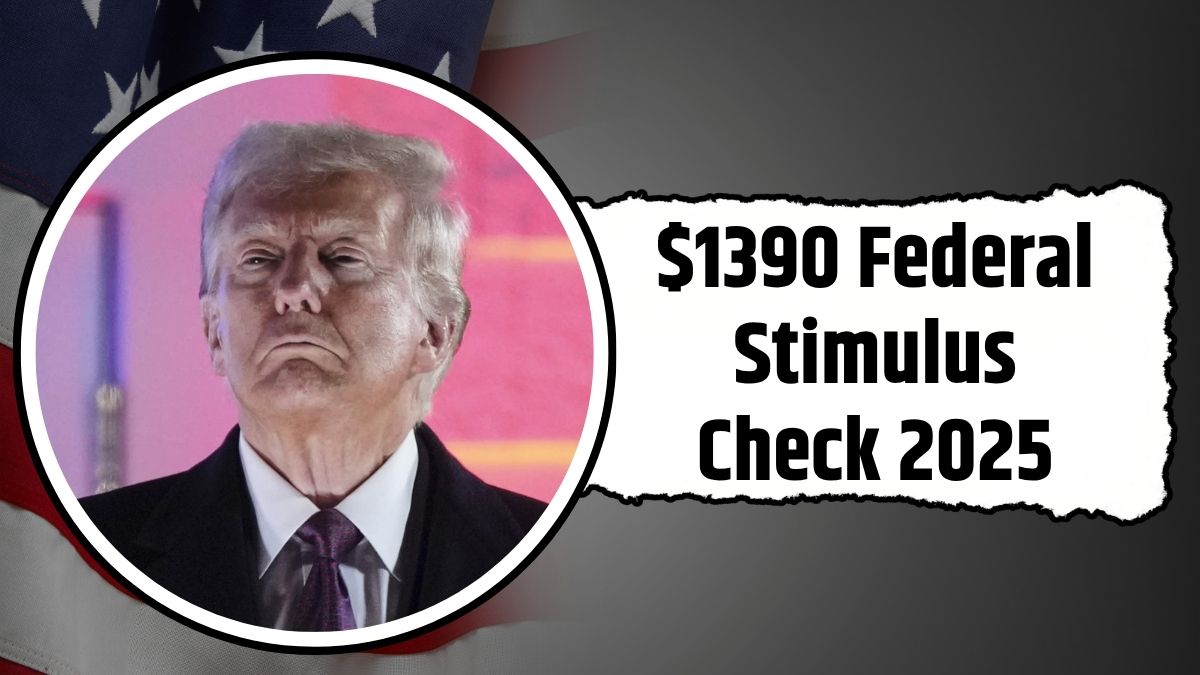As inflation continues to pressure American households, the federal government is stepping in with new economic relief. The $1,390 Stimulus Check 2025 is one of the most widely discussed financial support programs this year. Aimed at low- and middle-income Americans, it promises one-time, tax-free financial relief without impacting existing benefits like Social Security or SSI.
If you’re wondering who qualifies, when the checks are coming, or how to claim yours, here’s a complete breakdown—in clear, straightforward language.
What Is the $1,390 Stimulus Check 2025?
The $1,390 Stimulus Check 2025 is part of a federal relief initiative designed to support Americans struggling with housing, food, and medical expenses. This one-time payment is tax-free, doesn’t affect your current benefits, and is expected to begin distribution in mid-2025.
The relief is automatically processed for most taxpayers and benefit recipients. If you’ve filed taxes recently or already receive Social Security, SSDI, SSI, or VA benefits, you may not need to take any extra steps to receive it.
Quick Overview: $1,390 Stimulus Check 2025
| Category | Details |
|---|---|
| Payment Amount | $1,390 (one-time) |
| Eligibility | Low & middle-income earners, federal benefit recipients |
| Income Limits | Single: ≤$75,000; Married: ≤$150,000; Head of Household: ≤$112,500 |
| Application Needed | No (for most); Yes (for non-filers) |
| Payment Method | Direct deposit, paper check, or EIP card |
| Taxable? | No – not counted as income |
| Expected Payment Date | Summer 2025 (estimated) |
Who Will Be Eligible for the $1,390 Check?
To qualify for the 2025 stimulus check, you must fall within one of the defined income or benefits brackets. These include:
- Single taxpayers earning $75,000 or less
- Married couples filing jointly with combined income of $150,000 or less
- Heads of household earning up to $112,500
- Recipients of federal benefits, such as:
- Social Security
- Supplemental Security Income (SSI)
- Social Security Disability Insurance (SSDI)
- Veterans Affairs (VA) benefits
- Railroad Retirement
Families with qualifying dependents may receive additional funds, similar to past relief rounds.
Important Clarification: Does This Affect Your Social Security?
A common question is whether this check will reduce or replace existing benefits. The answer is no.
The $1,390 stimulus check is separate from your Social Security payments. It will not affect monthly benefit amounts, nor will it change your eligibility for SSI, SSDI, Medicaid, SNAP, or other programs.
This is additional federal assistance, not a trade-off or replacement.
When Will the Stimulus Check Arrive?
Though the IRS hasn’t released an exact date, payments are expected to begin in summer 2025, possibly around July or August. As with previous rounds of federal payments, the distribution will likely happen in phases:
- Direct deposit recipients will receive payments first.
- Paper checks will be mailed to those without banking info on file.
- EIP debit cards will be issued to select individuals.
The IRS will update the rollout schedule on its official website, so stay informed to avoid missing out.
Do You Need to Apply for the Stimulus Check?
In most cases, no application is required. If you meet the following criteria, your payment will be issued automatically:
- You filed taxes in 2023 or 2024
- You currently receive Social Security, SSDI, SSI, or VA benefits
However, if you didn’t file taxes and you don’t receive any federal benefits, you must register using the IRS non-filer tool, which will reopen shortly before the payments begin.
IRS Tools to Track Payments and Eligibility
To simplify the process, the IRS will launch online portals that will help you:
- Check your eligibility
- Track the status of your stimulus payment
- Update banking and mailing details
- Fix issues with rejected or delayed payments
Tools like “Get My Payment” and “Check Eligibility” will become active in the months leading up to the release. Visit irs.gov for updates.
Will the $1,390 Be Taxed?
No, the payment is not considered taxable income. You don’t need to:
- Report it on your next tax return
- Worry about it affecting your Medicaid, SNAP (food stamps), or housing assistance
It’s treated the same way as past stimulus checks—a federal benefit, free of tax, and designed to provide extra help during economic hardship.
How Should You Use the Stimulus Check?
There are no restrictions on how to use the $1,390, but here are practical suggestions:
- Pay rent or cover overdue bills
- Buy groceries or household essentials
- Pay off credit card debt or loans
- Visit the doctor or buy medication
- Add to an emergency fund
- Prepare for winter heating or school costs
The goal is to ease your financial burden. Use it where it counts most.
Could More Stimulus Payments Be Coming?
At present, there are no confirmed plans for a second stimulus payment in 2025. However, government officials have indicated that future relief may be considered based on:
- Inflation trends
- Job market fluctuations
- Economic recovery speed
If the situation worsens later this year, more stimulus rounds could be introduced. Stay alert for announcements from the White House and IRS.
Public Reaction to the $1,390 Stimulus
So far, the response has been largely positive. Americans on fixed incomes—especially seniors, disabled individuals, and single parents—have welcomed the announcement.
For many, past stimulus checks prevented evictions, utility shutoffs, and other crises. This new payment is expected to provide similar financial relief, particularly as inflation continues to impact everyday expenses.
Don’t Miss the Other Stimulus—$1,702 Check Also in Play
While this article focuses on the $1,390 payment, it’s worth noting that Alaska residents may also qualify for a $1,702 stimulus through the Permanent Fund Dividend (PFD) program.
Check your eligibility for state-specific relief programs in addition to the federal one.








